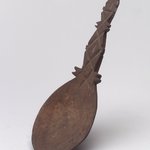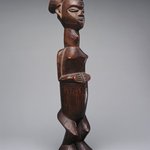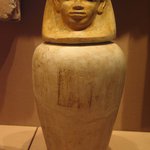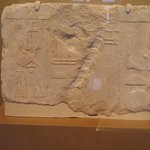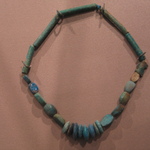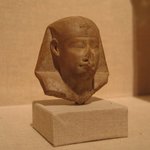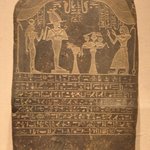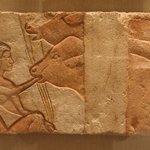Can you tell me about "Sa-Iset the Younger"?

We can tell by his elaborately pleated and knotted garment that he is of a very high rank in society. From the inscription, we know that he was Sa-Iset the Younger from Asyut an official who held the title Overseer of the Granaries of Upper and Lower Egypt.
The preservation is amazing!

It really is! The uniquely dry climate of Egypt coupled with the darkness of the inside of tombs contributed to the unusual preservation of many organic materials like wood and papyrus.
You can tell by the elaborate pleating preserved in Sa-Iset the Younger's garment that he was a high ranking individual.
What is the story behind this statue? What did it mean for the people?

The statue of Sa-Iset the Younger depicts an Egyptian official. It's made of wood, which was a rare resource in Egypt and shows that he was a fairly wealthy individual. Statues like these would have been made for tombs or temples, which is why the person's name was inscribed as well. In Egyptian belief, a deceased person could inhabit a statue of themselves, so long as it was intact and their name was inscribed on it, during their afterlife.
I'm curious about Sa-iset the Younger.

Sa-Iset the Younger was an Egyptian official. The statue is made of wood, which was a rare resource in Egypt and shows that he was a fairly wealthy individual. The elaborate pleating of his garment is also a sign of wealth.
Statues like these would have been made for tombs, which is why the person's name was inscribed as well. In Egyptian belief, a deceased person could inhabit a statue of themselves, so long as it was intact and their name was inscribed on it, during their afterlife. The uniquely dry climate of Egypt coupled with the darkness of the inside of tombs contributed to the unusual preservation of many organic materials like wood and papyrus. Still it is rare to find examples of wood like this so intact!
Can you tell me about Sa-Iset the Younger? I'm curious about the longer skirt.
Yes! He was a high ranking official which is why he is shown with a longer kilt. He held the title Overseer of the Granaries of Upper and Lower Egypt (also Overseer of the Granaries of the Ramesseum, a major temple at Thebes).
Is that common in the New Kingdom or just the general way of depicting high ranking officials?
It was a garment specific to high-ranking officials. You may have seen one of the statues of Metjetji, who lived in the 5th-6th Dynasty, has a similar long kilt, just without the top part. Viziers, the highest ranking official under the king, also are show with long kilts. Their's are especially high-wasted too.
Can you tell me about the hair on Sa-Iset the Younger?
His hair is a very fine wig. If you look closely, you can see that it would have been made up of many small braids.
It's seems longer than what I'm used to seeing, and not the perfect bob shape.
There were lots of different wigs throughout ancient Egyptian history! Longer wigs were generally for more ceremonial occasions. Shorter wigs were more practical for daily life.
This particular tightly braided style was popular in the Ramesside period (when the kings named Ramses ruled Egypt) when Sa-Iset the Younger lived.
That makes sense, he just looks a bit disheveled compared to the other statues. Maybe it's the wood carving that gives me that impression.
I can see what you mean. I think it has to do, also, with the wear on this statue and staining on the wood. It's remarkable that the wood survived at all!
Very true! The dry climate must help.
Can you tell me about her clothing?

This painting of a woman named Tjepu includes a great example of the kind of fine linen that is common in depictions of ancient Egyptian clothing.
Women are often shown wearing tight-fitting, ankle length dresses made of white linen. Here, she also wears a translucent overgarment also of white linen. The lines you see in it represent pleats.
In this painting of Tjepu, you also see a type of necklace called a wesekh or a broad collar, which was based on collars made of real flowers and therefore had important connotations of rebirth and regeneration.
Can you tell me about his clothing?

This wooden statue of a man named Sa-iset the Younger is another great example of elaborate pleating and here we have the opportunity to see it in three dimensions. This garment also would have been made of linen.




















